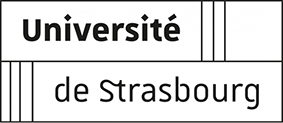Owing to their phenotypic plasticity, terrestrial plants provide humans with sources of nutrition, fiber, energy and medicinal compounds. Small-interfering RNAs (siRNAs) of 20-24 nucleotide length support this plasticity via conserved silencing mechanisms that tune gene regulatory networks and protect genomic integrity. When bound to a suitable effector protein, a siRNA molecule conveys sequence information needed to discriminate target from non-target RNAs. One class of endogenous siRNAs targets cleavage of cellular mRNAs to regulate development, whereas another guides DNA methylation to silence transposons, helping to prevent deleterious mutations. Methylation of transposons can also affect flanking genes, allowing states of gene expression to be inherited epigenetically over cell divisions and successive plant generations. Given the functional specialization of each siRNA class, a failure to synthesize their double-stranded RNA precursors from appropriate source loci, or errors in channeling siRNAs to appropriate effector proteins can disrupt development and/or render cells vulnerable to mutations and disease. Our team studies mechanisms that safeguard the biogenesis of siRNAs in distinct pathways to preserve their specialized silencing functions in the model plant Arabidopsis thaliana.
Research area
Members
-
Todd BLEVINS
Directeur de recherche / Research director
-
Luisa FELGINES
Chercheuse CDD / Contractual researcher
-

Anne-Sophie GASC
Doctorante / PhD student
-

Christophe HIMBER
Ingénieur d’études / Engineer
-
Fabrice MICHEL
Maitre de conférences / Assistant professor
-
Zoi PENTHEROUDAKI
Doctorante / PhD student
Selected publications
-
THIEME M., MINADAKIS N., HIMBER C., KELLER B., XU W., RUTOWICZ K., MATTEOLI C., BÖHRER M., RYMEN B., LAUDENCIA-CHINGCUANCO D., VOGEL J., SIBOUT R., STRITT C., BLEVINS T. and ROULIN A.C.
Transposition of HOPPLA in siRNA-deficient plants suggests a limited effect of the environment on retrotransposon mobility in Brachypodium distachyon
PLoS Genetics, 20(3):e1011200, 2024. | DOI : 10.1371/journal.pgen.1011200

-
FELGINES L., RYMEN B., MARTINS L.M., XU G., MATTEOLI C., HIMBER C., ZHOU M., EIS J., CORUH C., BÖHRER M., KUHN L., CHICHER J., PANDEY V., HAMMANN P., WOHLSCHLEGEL J., WALTZ F., LAW J.A. and BLEVINS T.
CLSY docking to Pol IV requires a conserved domain critical for small RNA biogenesis and transposon silencing
Nature Communications, 15:10298, 2024. | DOI : 10.1038/s41467-024-54268-0

-
WIERZBICKI A., BLEVINS T. and SWIEZEWSKI S.
Long Noncoding RNAs in Plants
Annual Review of Plant Biology, 72:245-271, 2021. | DOI : 10.1146/annurev-arplant-093020-035446

-
BÖHRER M., RYMEN B., HIMBER C., GERBAUD A., PFLIEGER D., LAUDENCIA-CHINGCUANCO D., CARTWRIGHT A., VOGEL J., SIBOUT R. and BLEVINS T.
Integrated genome-scale analysis and northern blot detection of retrotransposon siRNAs across plant species
In: Heinlein M. (ed) RNA tagging. Methods in Molecular Biology, vol 2166. Humana New York, NY., 2020. | DOI : 10.1007/978-1-0716-0712-1_23

-
FERRAFIAT L., PFLIEGER D., SINGH J., THIEME M., BÖHRER M., HIMBER C., GERBAUD A., BUCHER E., PIKAARD C.S. and BLEVINS T.
The NRPD1 N-terminus contains a Pol IV-specific motif that is critical for genome surveillance in Arabidopsis
Nucleic Acids Research, 47(17):9037-9052, 2019. | DOI : 10.1093/nar/gkz618


















